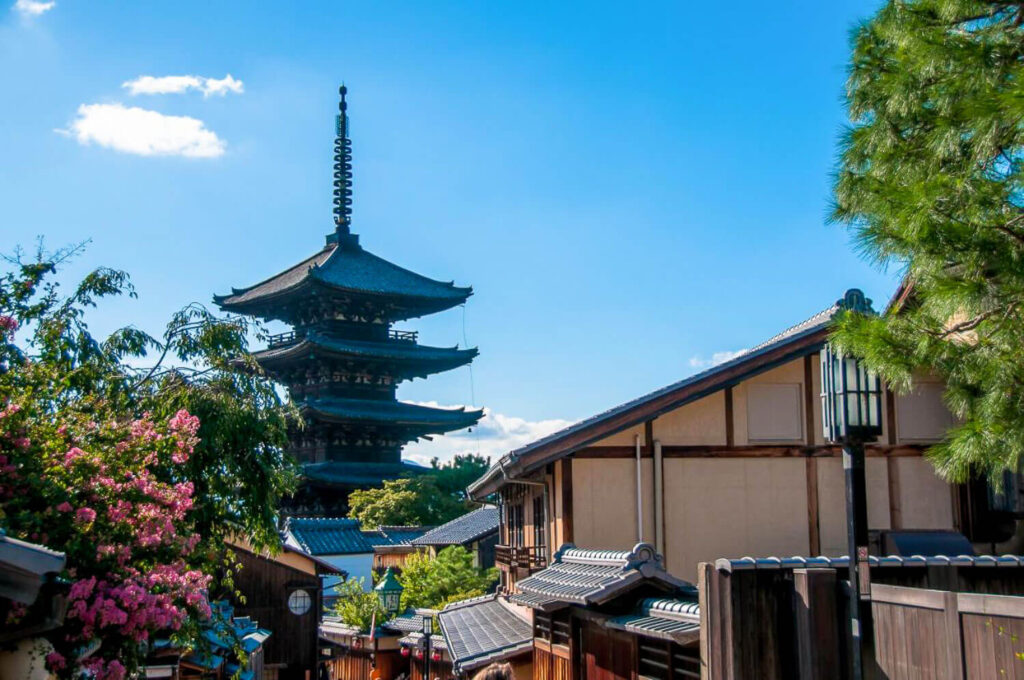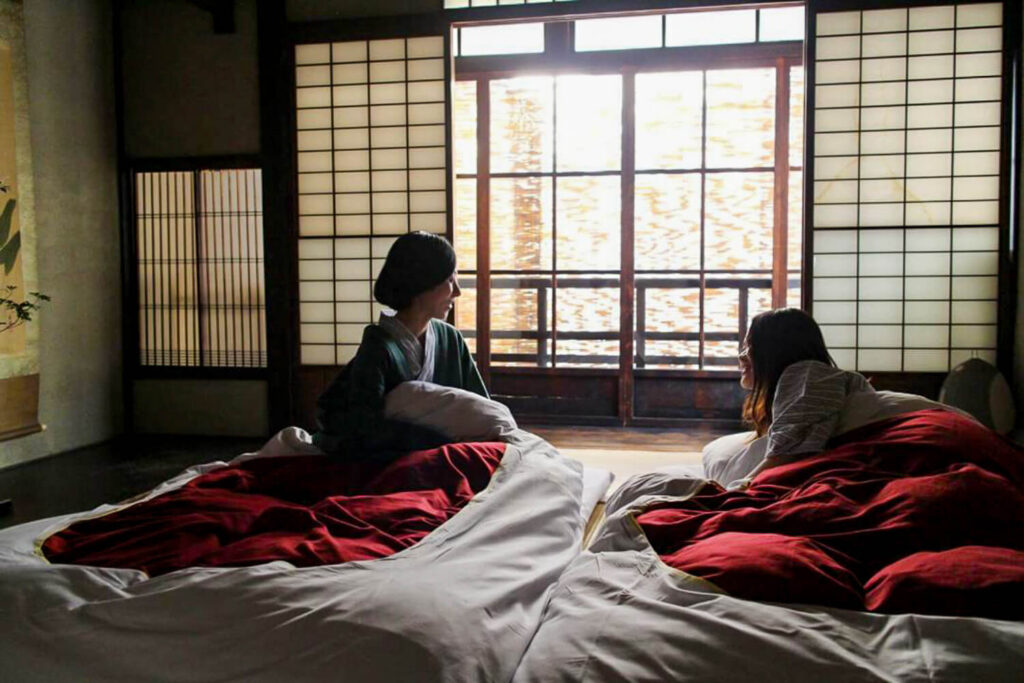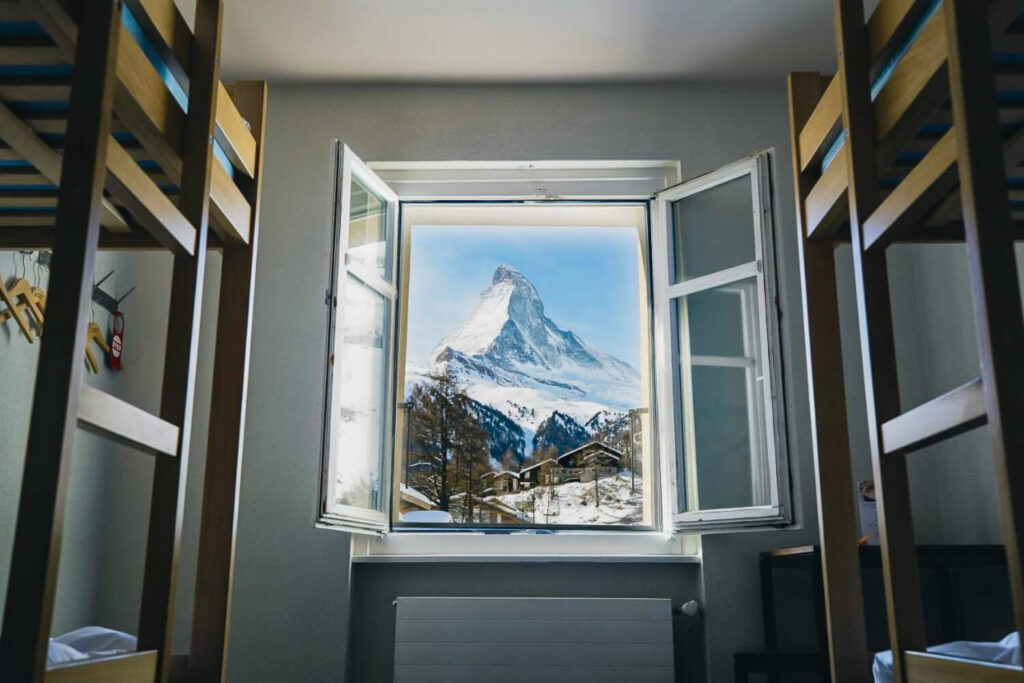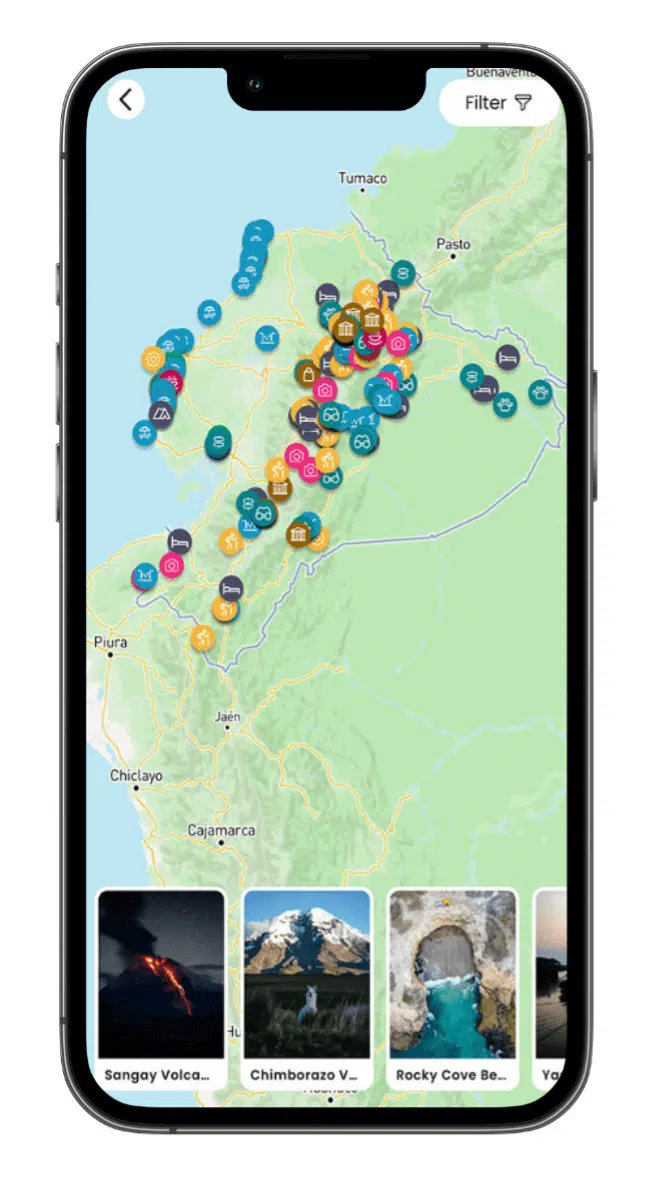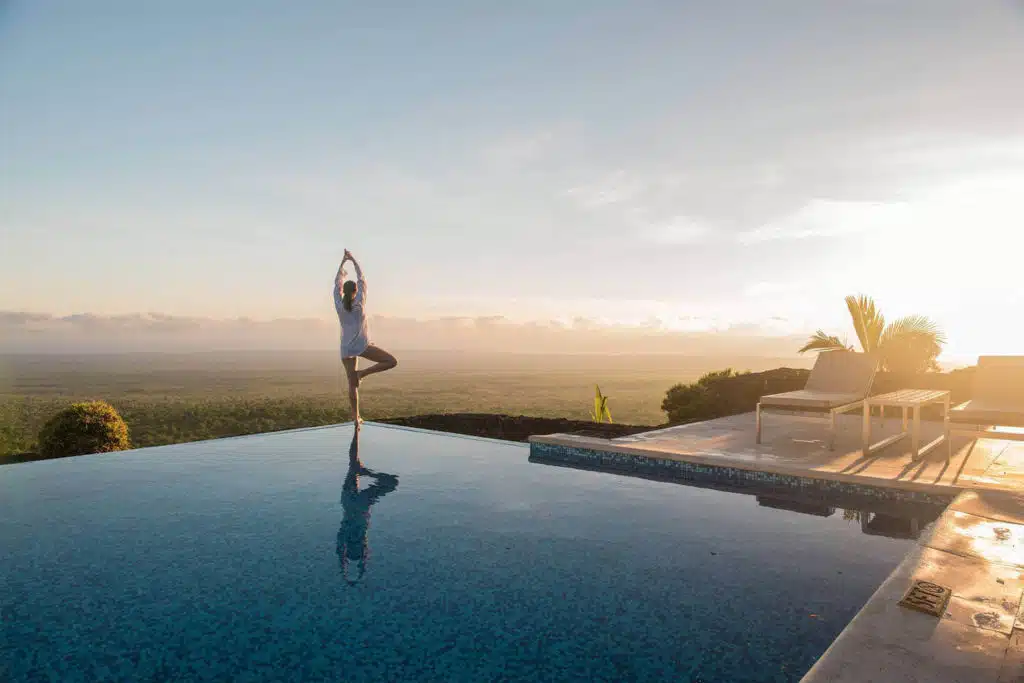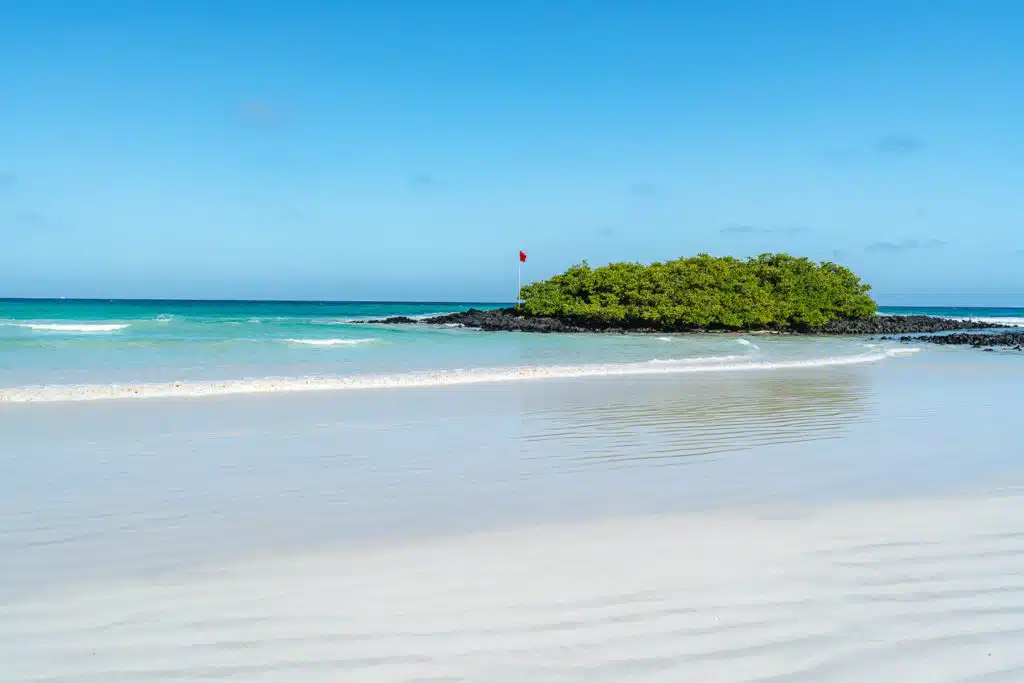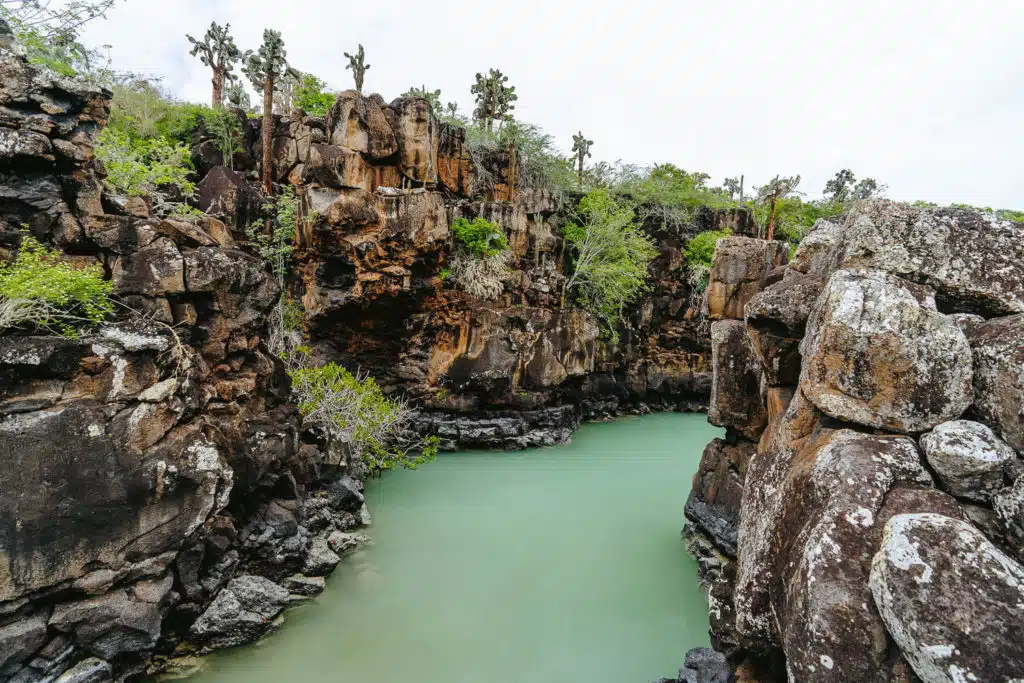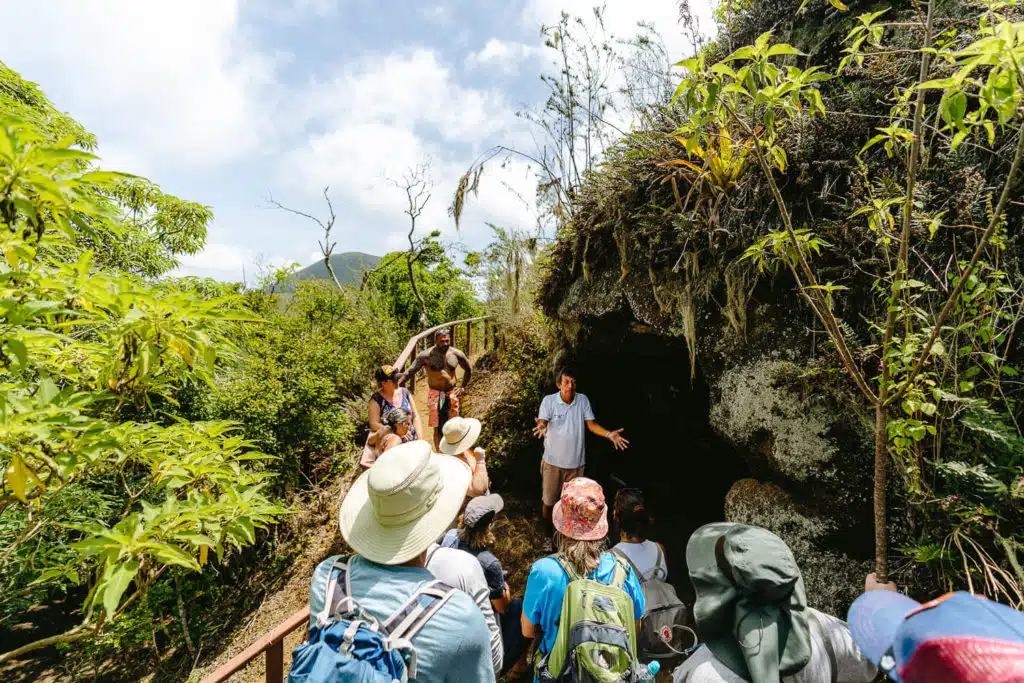9 Best Dive Sites in Santa Cruz, Galapagos
Scuba Diving Guide (2025)
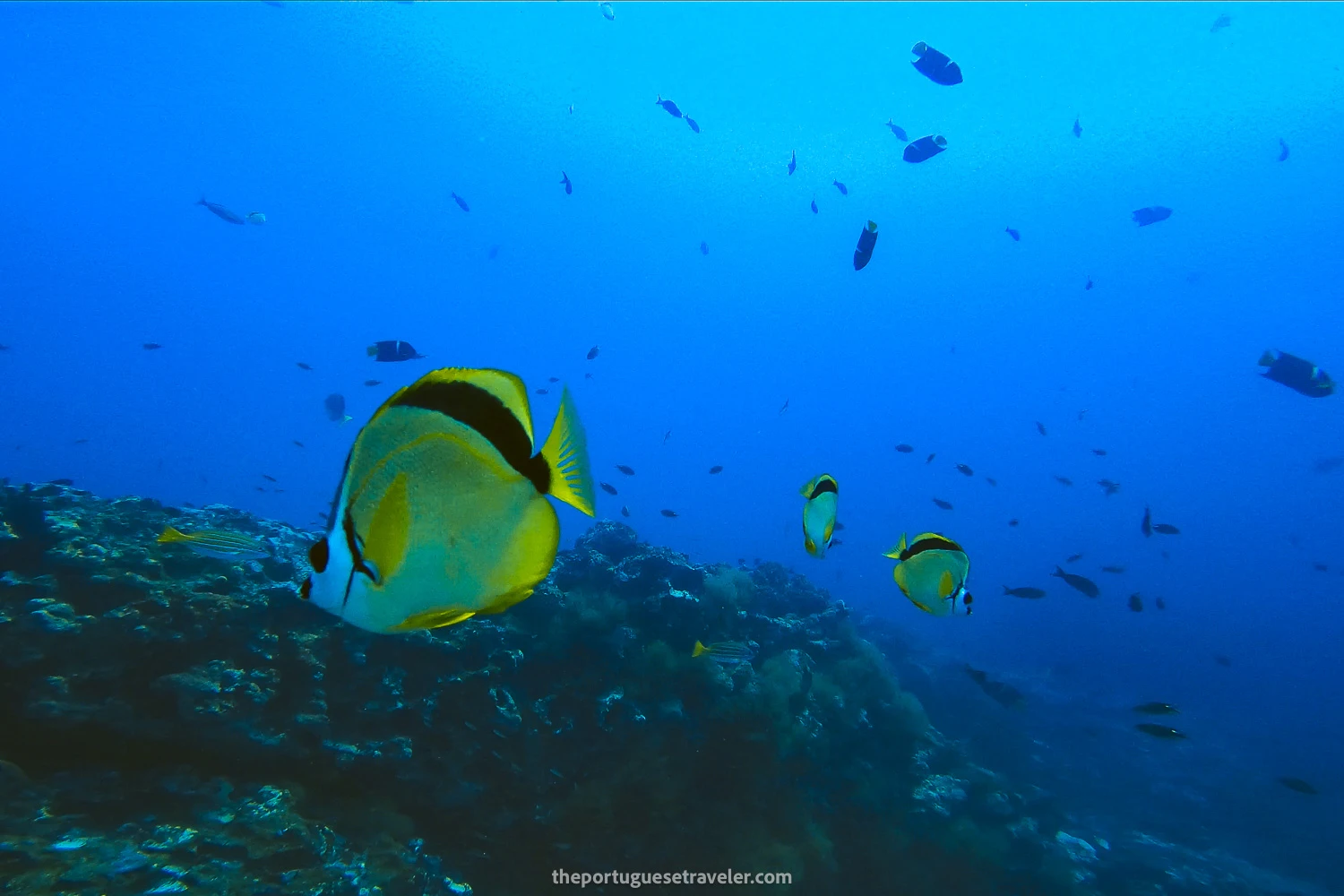
Santa Cruz is the main island of the Galapagos where you can scuba-dive, therefore I’ve listed here the 9 best dive sites in Santa Cruz you can’t miss. From hammerhead sharks to manta rays most of the dives will give you so many incredible experiences that I guarantee you you won’t forget.
Apart from scuba diving this is the island with the best infrastructure and tourist vibe of all the three main ones and like all of them it has adventures for all tastes. Here you can see all the most famous endemic animals of the Galapagos, explore the island on land and on water, learn about its history and conservation projects, and explore many of the other islands nearby.
I’ve personally done three of the nine dives and I’ve written detailed articles about them, which I will link together.
If you’re looking for other dive sites in the Galapagos, you might like my Galapagos Diving Guide. And if you’re still planning your trip, it might help to take a look at my Best Galapagos Itinerary article, too.
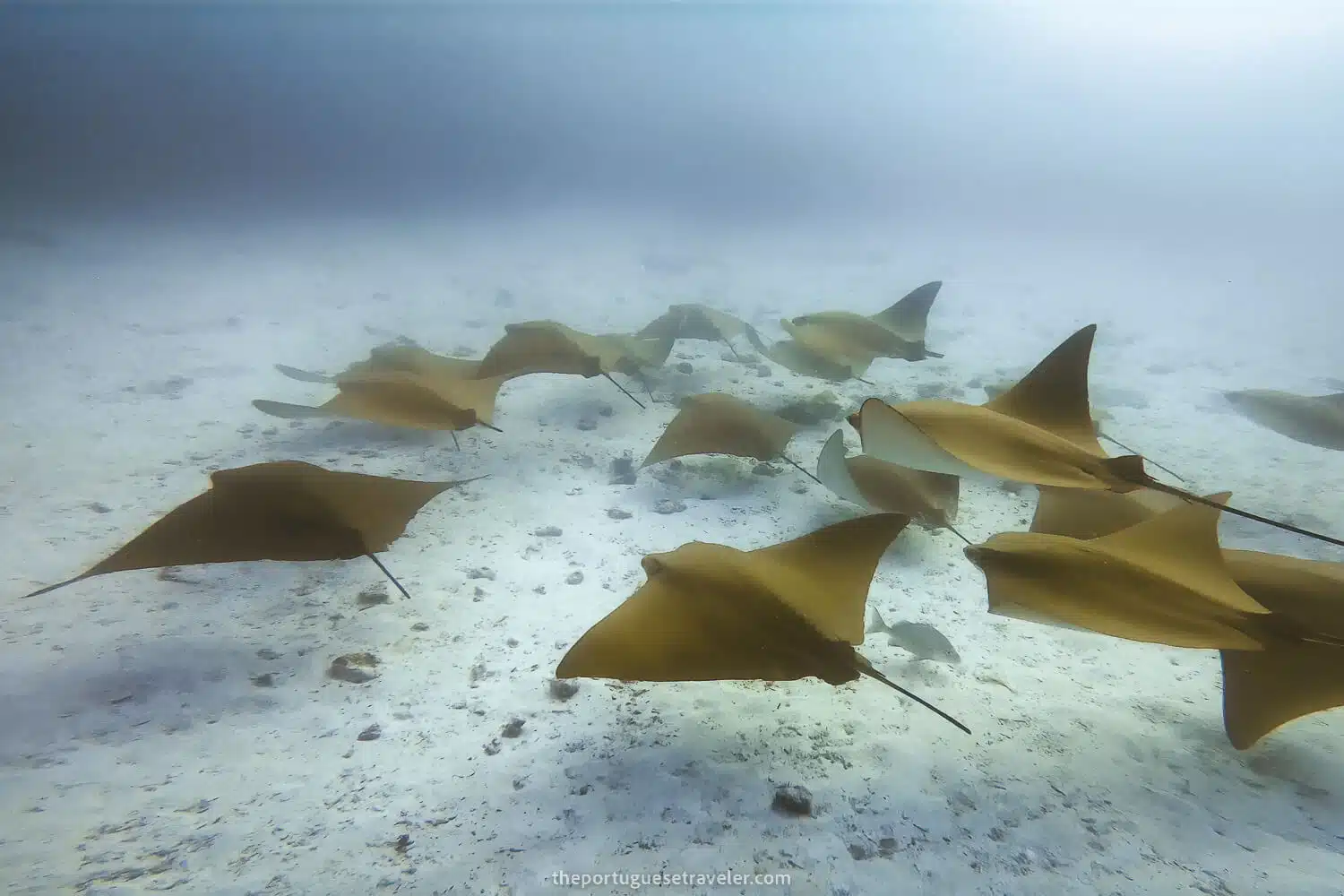
Travel Guide, Itineraries, Map, Local Tips
Get access to my curated list of all the best viewpoints, hiking trails, secret waterfalls, diving spots, wildlife tours, accommodations, and more, that will make your trip to Ecuador and The Galapagos unforgettable.
All of this, in an interactive guide featuring a mobile-friendly map, pre-designed itineraries, all my favourite photos, and helpful travel tips to guide your journey in this amazing unexplored country.
If you want personalized advice write me in-app and we can plan it together.

Best Dive Sites in Santa Cruz
General Info
Santa Cruz, like all the other islands, is part of the Galapagos National Park, and therefore it has a number of things you should know:
- Most of the activities have to be done on a tour with a Naturalist guide.
- All the agencies have the same prices (although you can barter if you book more than one tour).
- Most beaches have opening and closing times (turtle nesting reasons).
- You should book your tour at least one day in advance (or you might risk not having a place on the best ones).
- Bring Seasickness Medication for the tours on the water.
- Always use strong sunscreen (Sun in the Equator line burns more).
- Have mosquito repellant with you, especially at sunset. There are horseflies in the Galapagos.
- You can’t fly a drone here unless you have a special permit from the National Park.
- You can’t rent a motorcycle or a car, everything has to be done by taxi, bus, boat, bicycle, or on foot.
- You can’t and shouldn’t touch the animals on the island.
If you want some more information please check the Galapagos Conservancy’s website about Santa Cruz Island.
1. Gordon Rocks
The dive in Gordon Rocks is the best of the dive sites in Santa Cruz if you want to see Hammerhead Sharks. Gordon Rocks are the third most famous dive in the entire archipelago. Only slightly shadowed by the liveaboard experience of Darwin and Wolf’s islands, which cost a small fortune, and the Dive in Kicker Rock, starting from San Cristobal island.
It’s one of the top dives in the world and it’s on the bucket list for many underwater aficionados. As a diver myself, if I’d leave the Galapagos without seeing a hammerhead shark I would be disappointed. This is where I saw my first ten hammerheads and my first manta rays.
View the full blog post here: DIVING IN GORDON ROCKS
To book this tour: Check the local company Macarron Scuba Diver’s website, or book it online on Viator here: Daily diving tour in Gordon Rocks
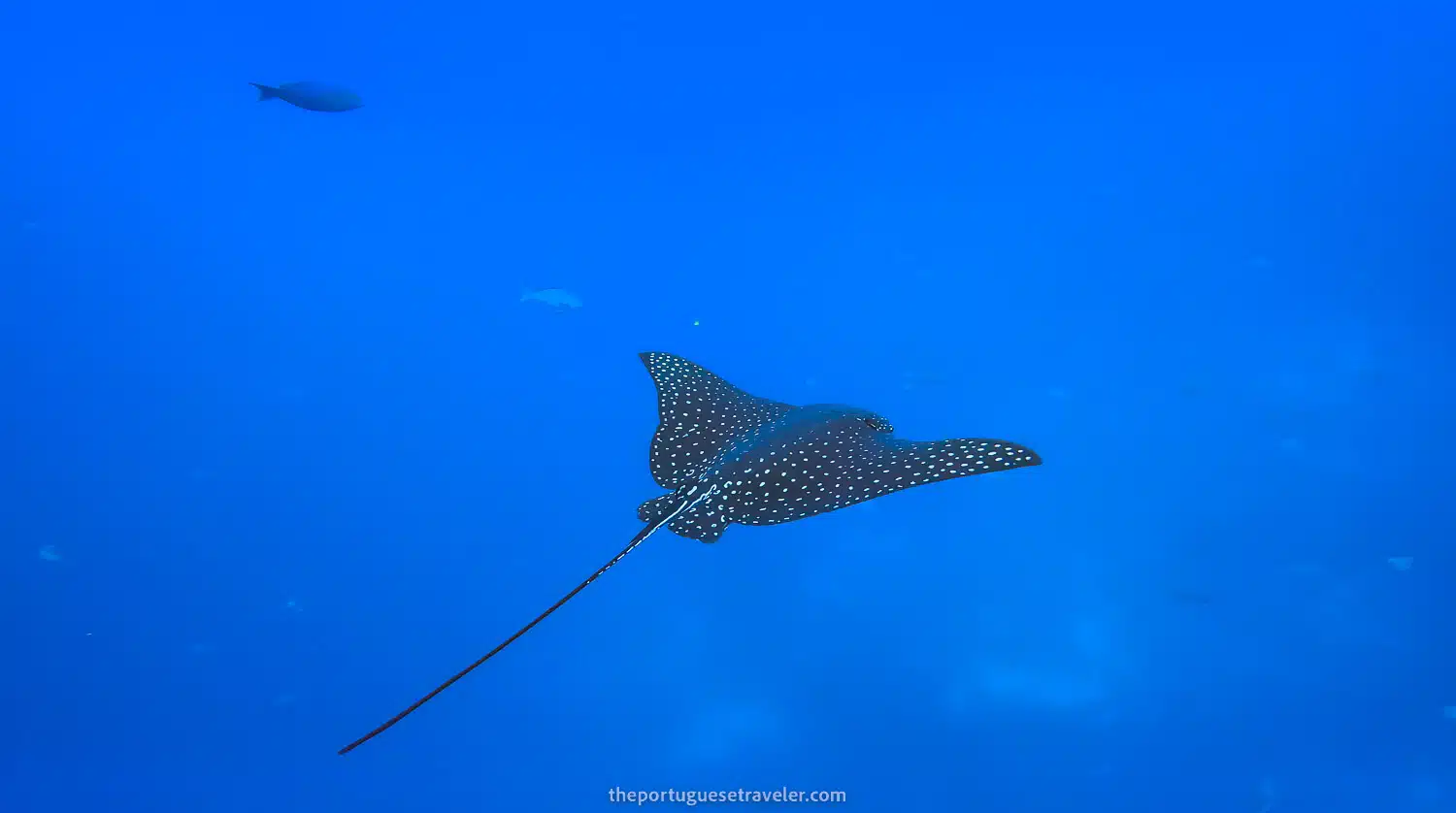
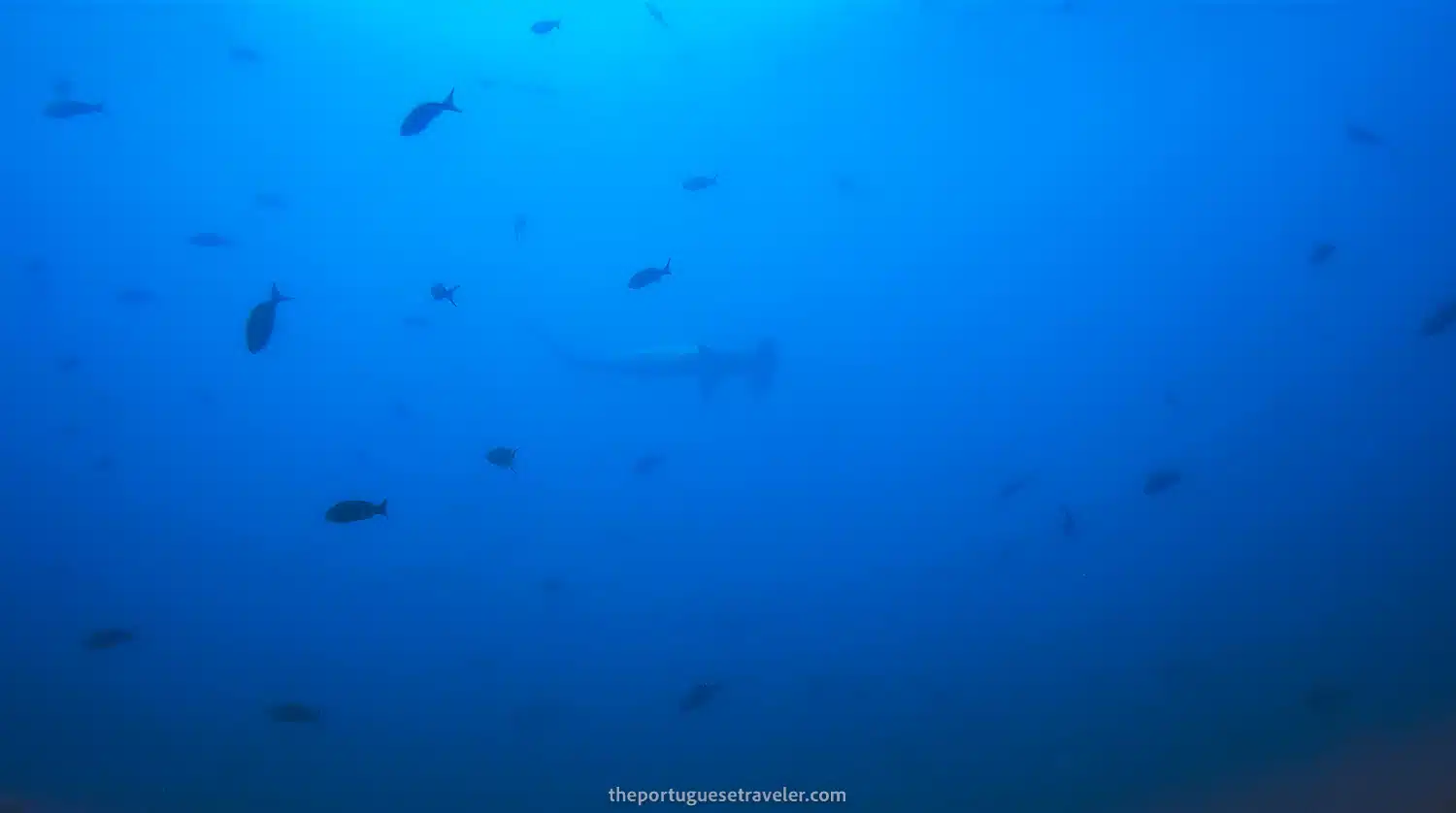
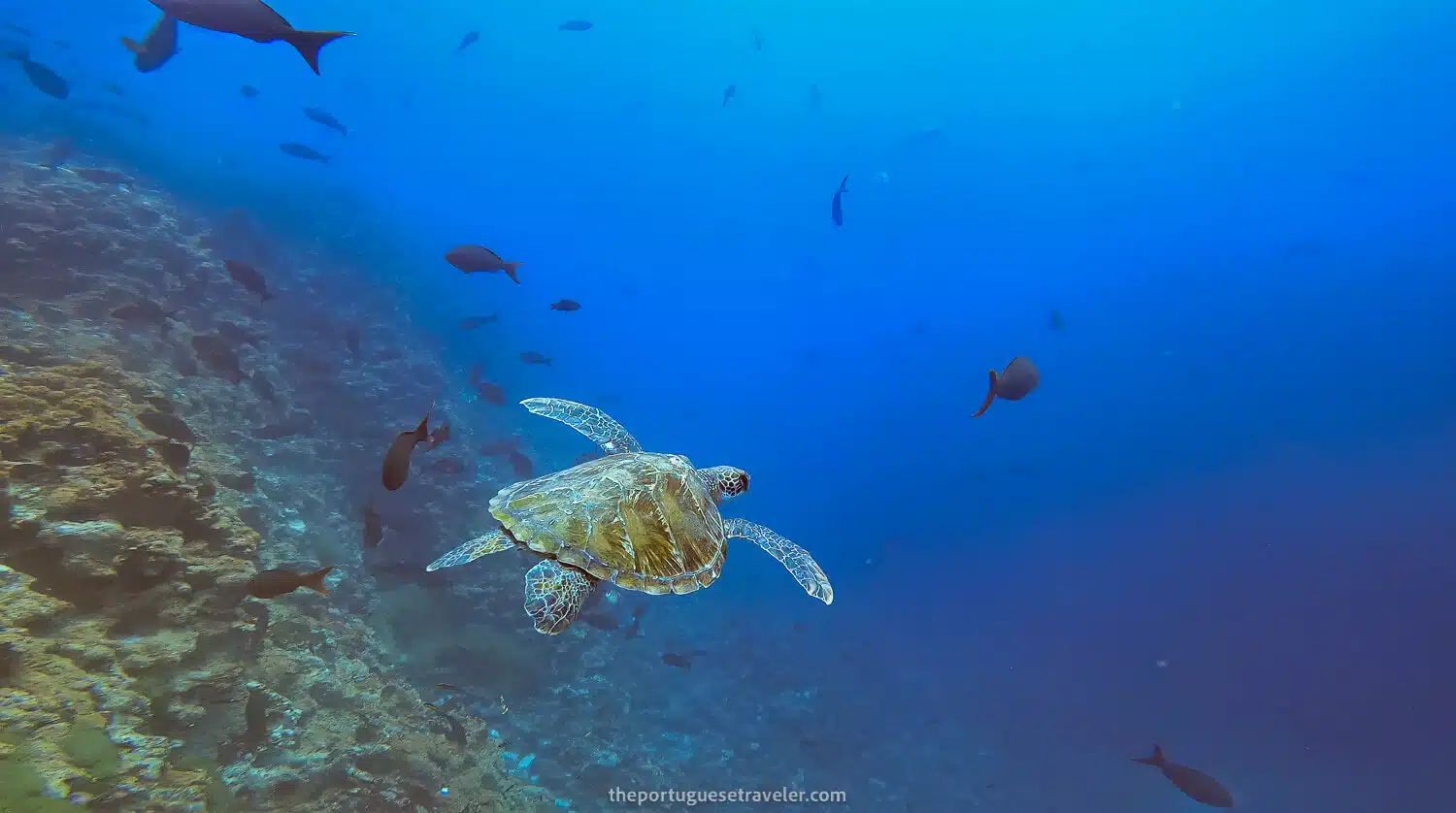
2. Punta Carrion
This dive site is just one hour east of the Itabaca channel. It is located on the northernest point of Santa Cruz island and it’s the only dive you can do, from the dive sites in Santa Cruz, that is literally located on the island. Here there are usually no strong currents and for that reason, it is a very nice site for divers from all levels. You have a great chance of diving together with playful baby sea lions and with a tad of luck, you will find sea turtles, eagle rays, hammerheads, and dolphins.
To book this tour: Check the local company Macarron Scuba Diver’s website
3. North Seymour Island
The North Seymour dive site is usually combined together with other islets in the near like, Mosquera or Daphne Minor. North Seymour island is located on the north part of Santa Cruz island, over Baltra island (aka South Seymour island). From the dive sites in Santa Cruz, I’ve done this one together with Mosquera islet and Gordon Rocks.
Both North and South Seymour Islands were named after the British royal navy officer of the late 18th century, Admiral Lord Hugh Seymour. In North Seymour, you can find an eel garden, some reef sharks resting on the sandy bottom, and morays. If you’re lucky some eagle and manta rays, and some Hammerhead sharks might pass near (i saw a hammerhead there). North Seymour is usually the check dive before the other islets where strong currents are more common.
View the full blog post here: DIVING IN NORTH SEYMOUR AND MOSQUERA
To book this tour: Check the local company Macarron Scuba Diver’s website
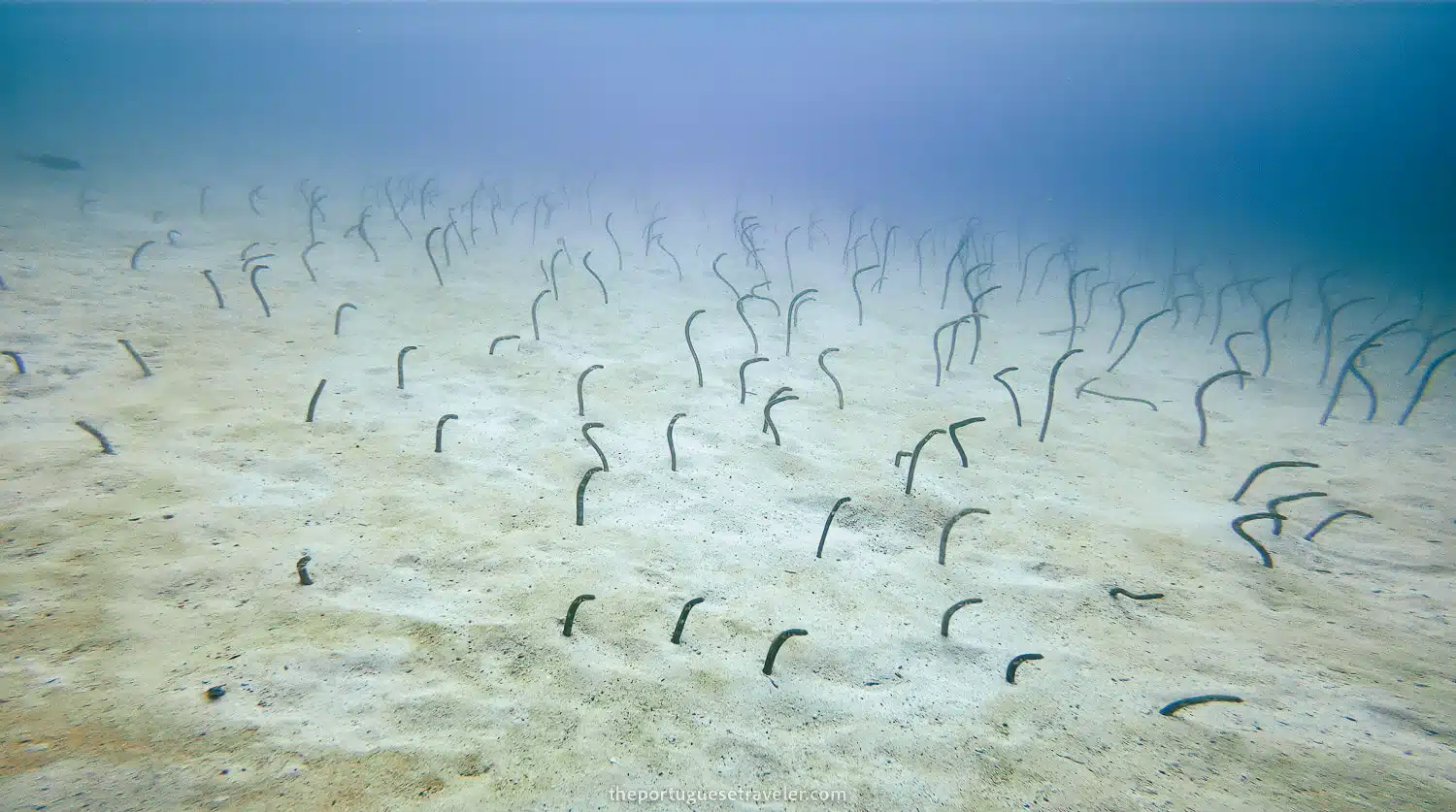
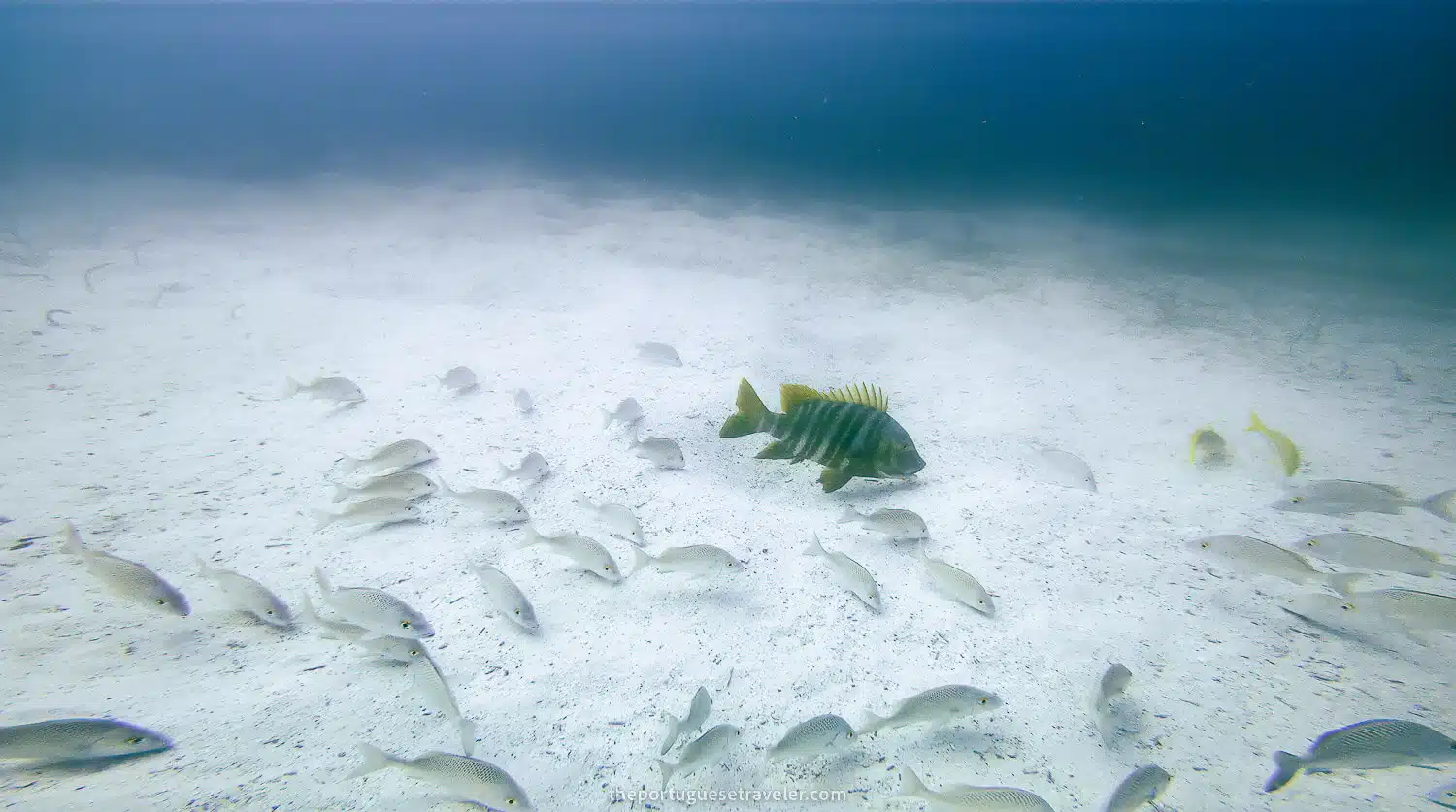
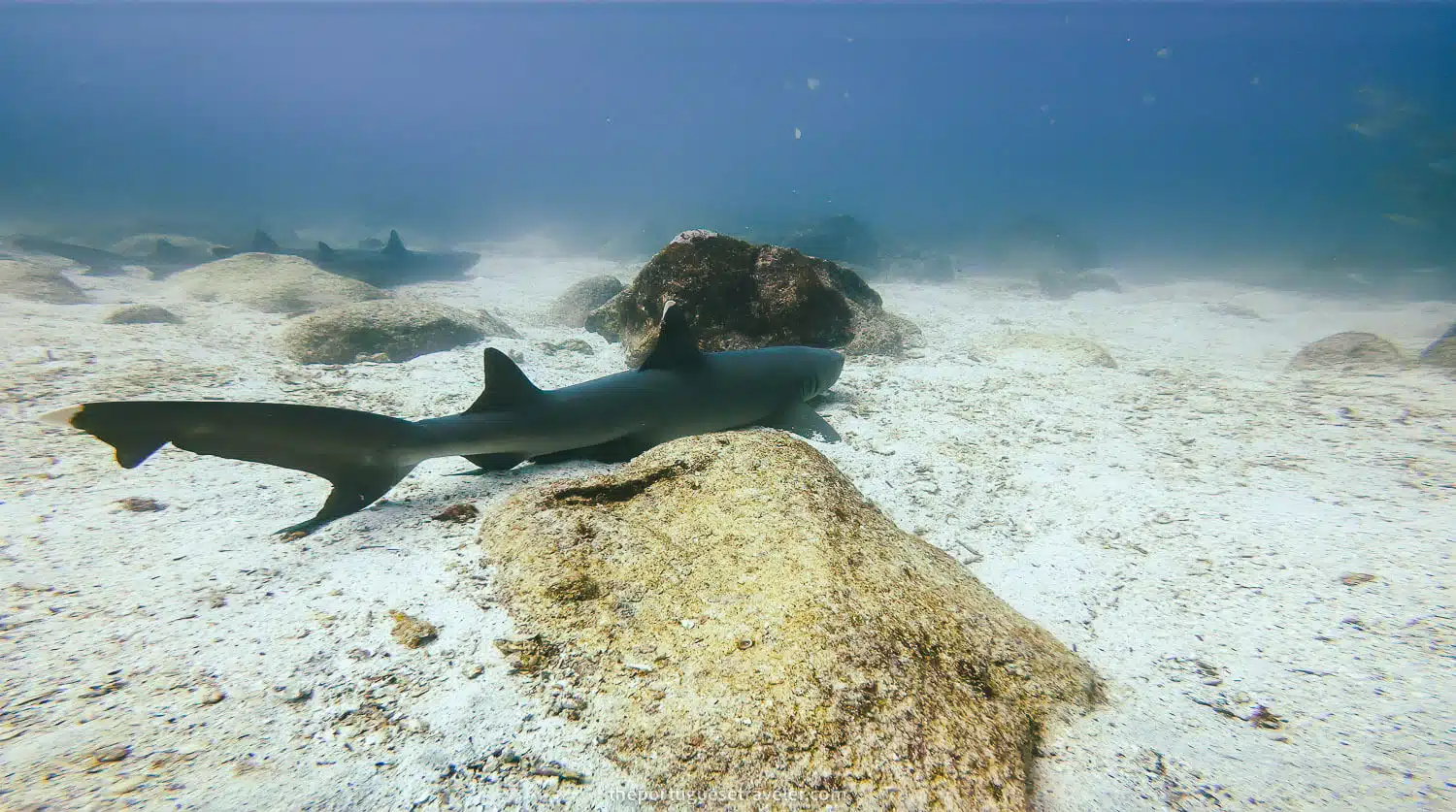
4. Mosquera Islet
Mosquera islet is located north of Santa Cruz island, in between the North and South Seymour islands. The name “Mosquera” comes from the Spanish and it is the name of a flower in the daisy family, the yellow fleabane flower. It is a dive where there are usually strong currents.
In Mosquera, you will for sure see a reef shark cleaning station and a sea of starfish. If you’re lucky you might spot hammerhead sharks, green turtles, eagle rays, manta rays, golden cownose rays (we saw a group of 15), giant puffer fish, king angelfish, blue and gold snappers, razor surgeonfish, and other beautiful fish. Totally a dive you should do if you’ve already done the Gordon Rock dive. Here you will have a lot of diversity and fun.
View the full blog post here: DIVING IN NORTH SEYMOUR AND MOSQUERA
To book this tour: Check the local company Macarron Scuba Diver’s website
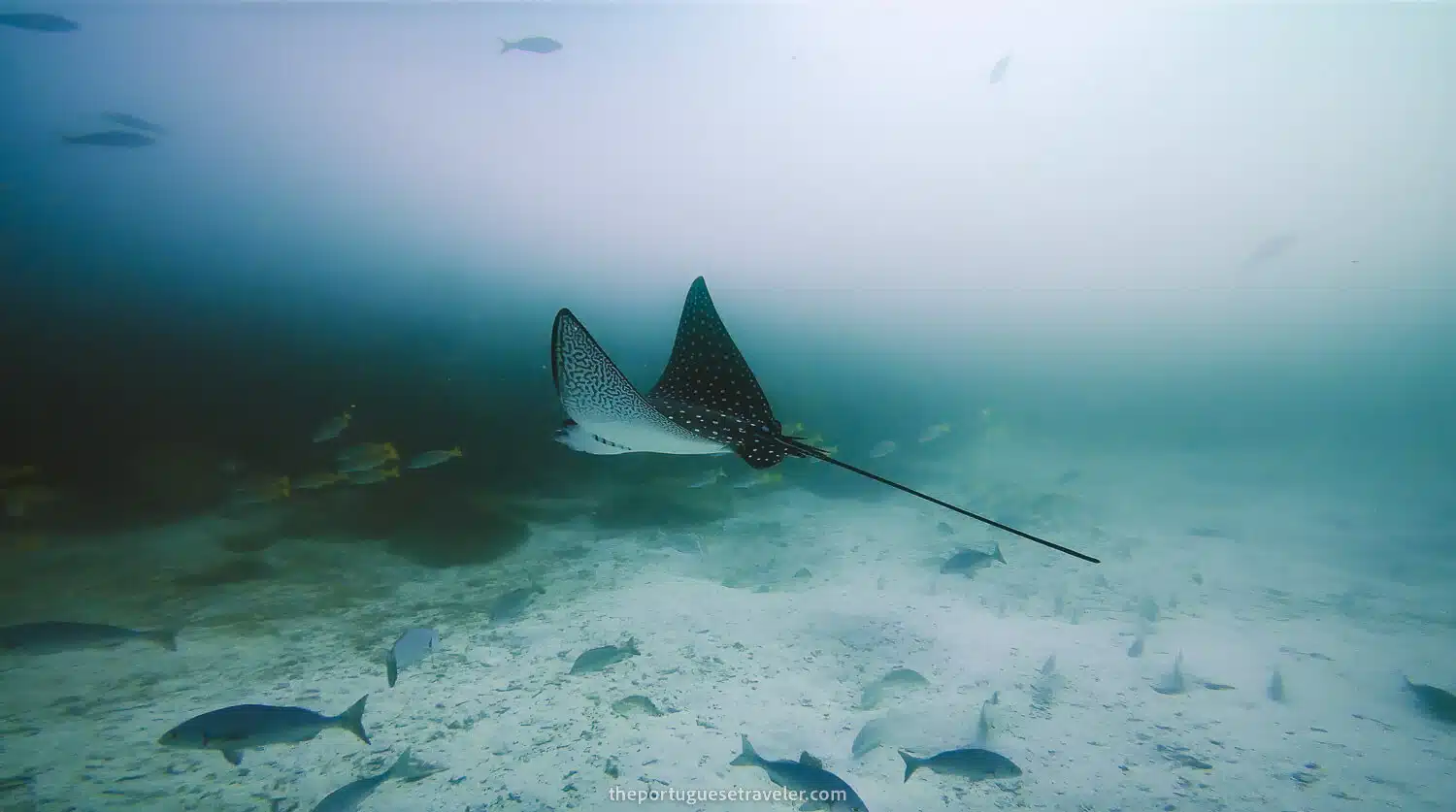
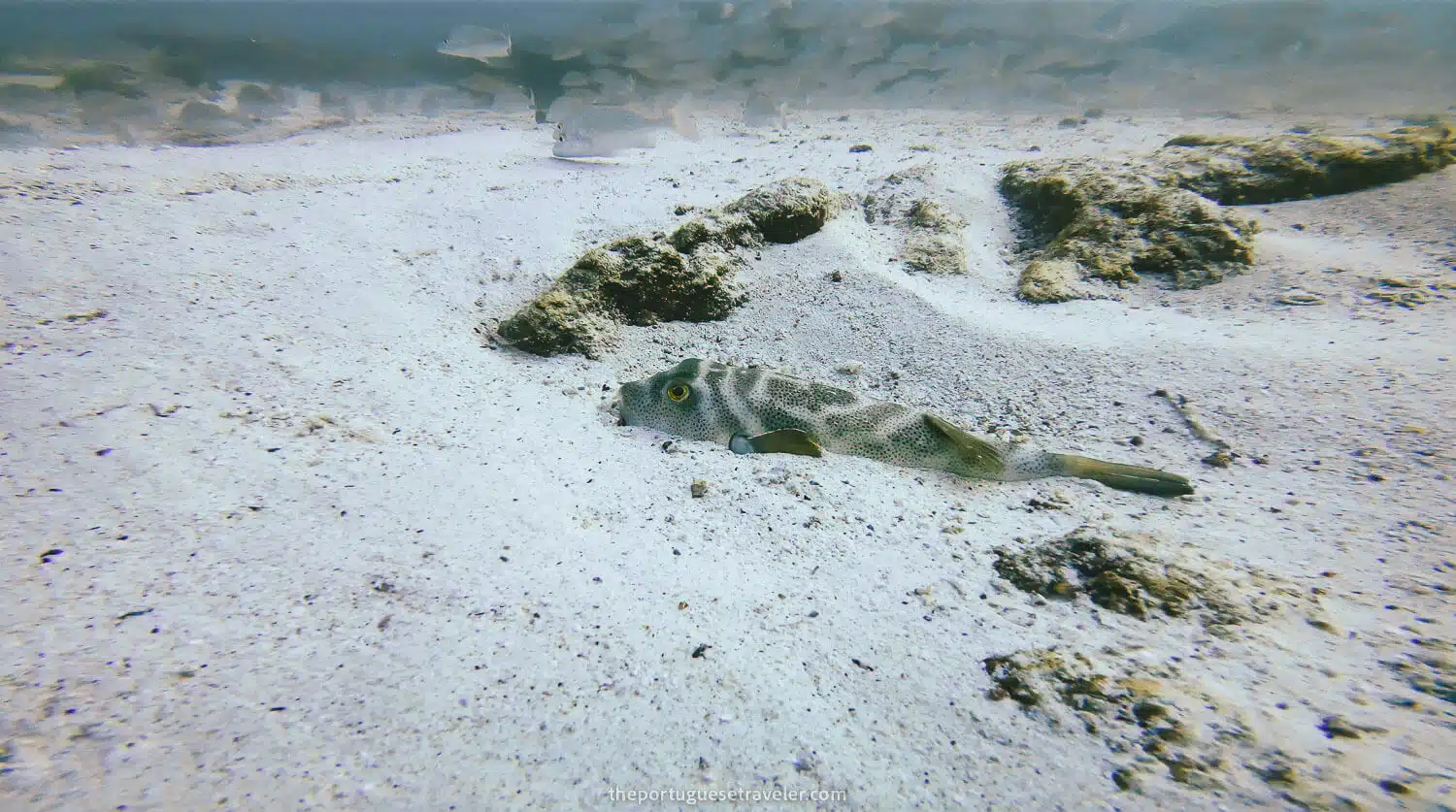
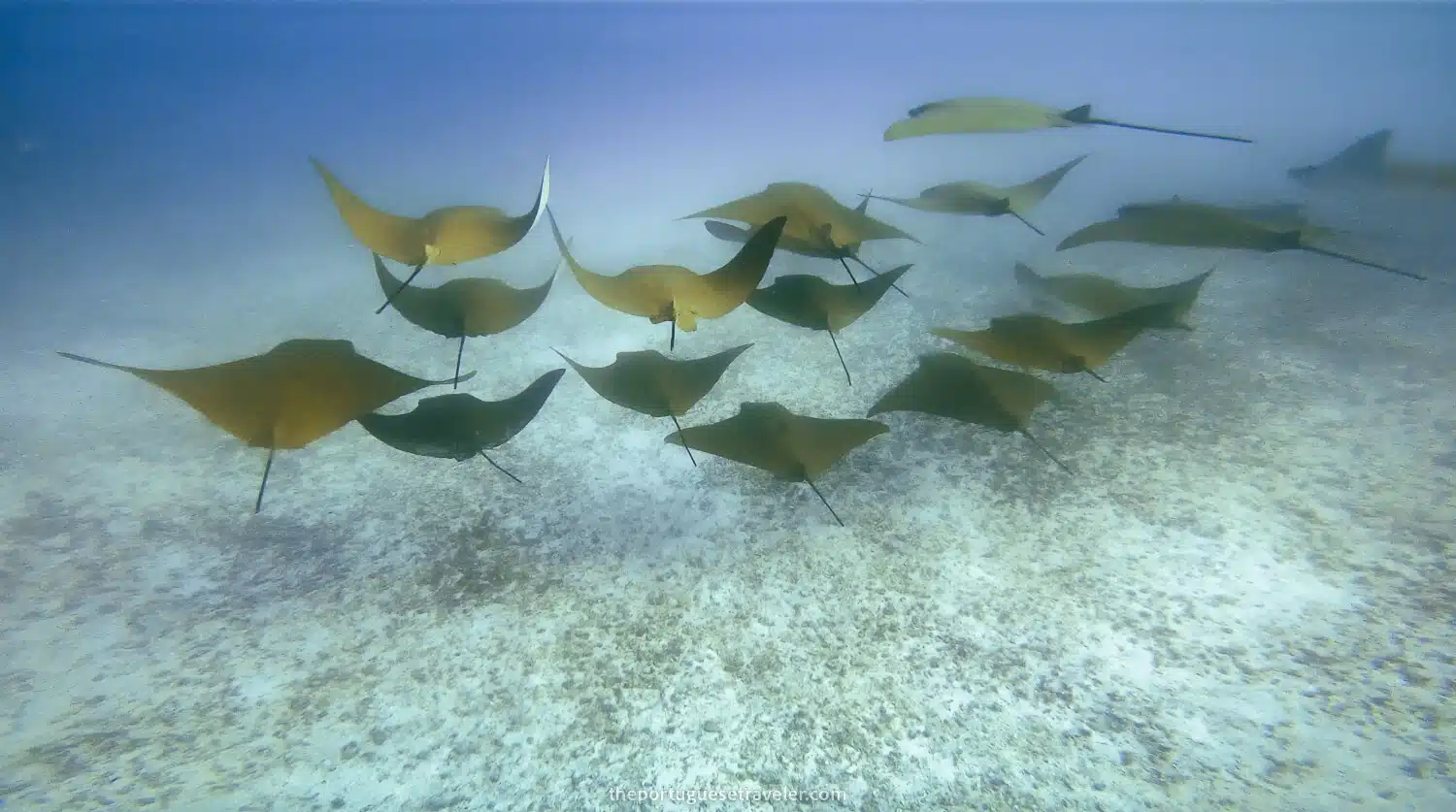
5. Bartolomé Island and Cousin Rock
Bartolomé Island is the most iconic photo you can have of the Galapagos islands and it is located northwest of Santa Cruz island. Bartolomé is a volcanic tuff islet on the east side of Santiago island. The journey there takes 90 minutes by speedboat and two hours by sailing boat (like on the day land tour).
The name of the island comes from Charles Darwin’s friend Bartholomew James Sullivan who was the principal surveyor and second lieutenant aboard the HMS Beagle. As in the land tour, you could spot some penguins, here you might swim with them and also spot some starfish.
Here as in many places in the Galapagos, you will be able to see reef sharks, and tropical reef fish such as the yellow-tailed surgeonfish, with luck you might spot some mobula rays, seahorses, and other sharks. It is a great tour to do a two-in-one check, the only hiccup is not climbing to the viewpoint for the most iconic perspective of the island. On this tour, you will also dive at the Cousin Rock dive site.
To book this tour: Check the local company Macarron Scuba Diver’s website
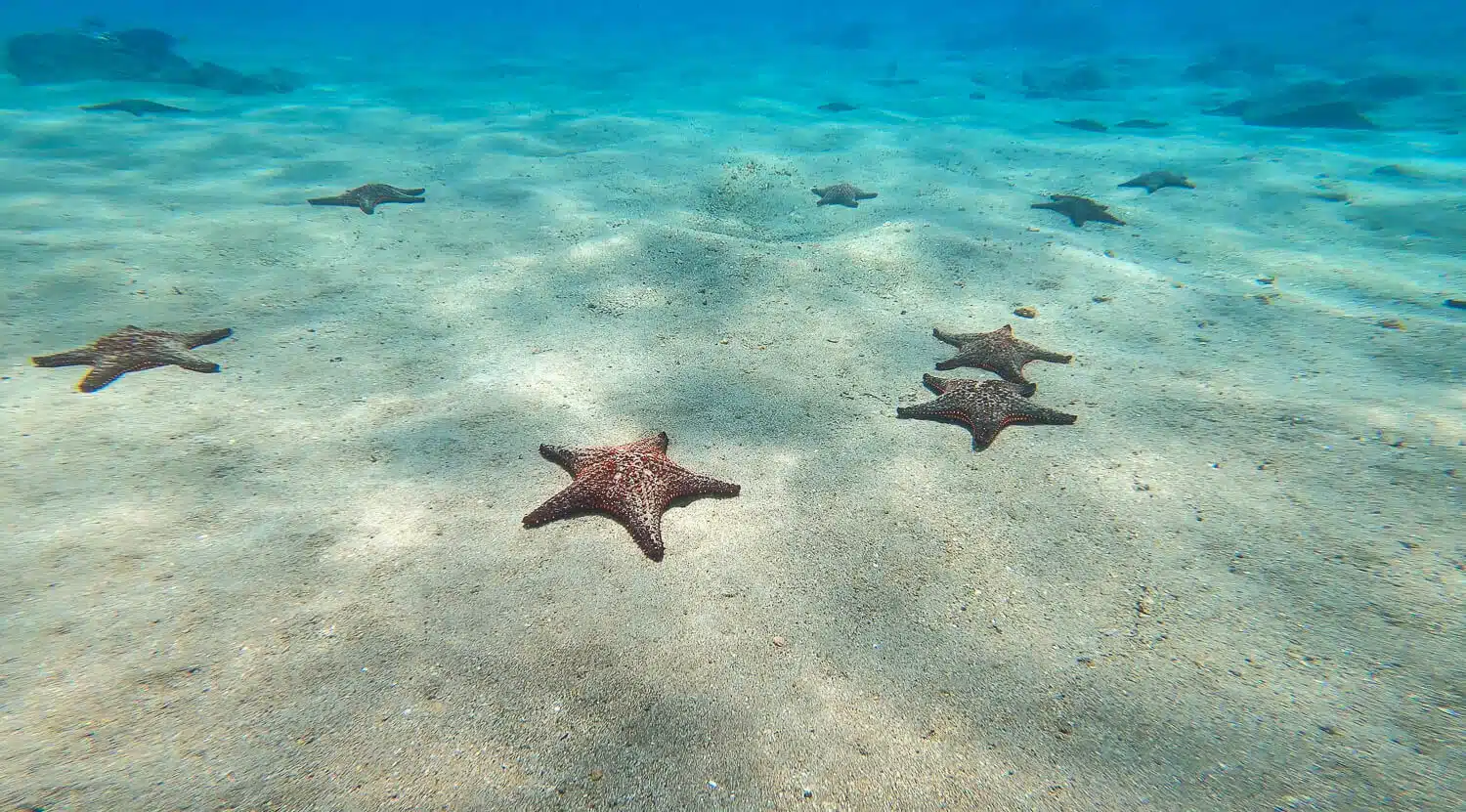
6. Daphne Islands
There are three main dive sites in the Daphne islands, Daphne Mayor (10-40m depth), Daphne Minor (5-30m depth), and Bajo de Daphne (5-25m depth). The diving tour in Daphne Islands is usually combined together with a dive in North Seymour or Mosquera islet.
Depending on your dive site you might find a small cave (not a cave dive) with reef sharks, a pinnacle with a variety of rays, Galapagos sharks, green turtles, tropical fish, and schools of barracudas, among other animals. If you are not a certified diver there is also a snorkeling tour available where you fish your own lunch and can spot many seabirds fishing with sea lions.
To book this tour: Check the local company Macarron Scuba Diver’s website
7. Floreana Island
On Floreana, you can scuba-dive in four different sites, Punta Cormoran, Enderby islet, Devil’s Crown islet, and Champion islet.
At Punta Cormoran the main attractions are batfish, golden rays, Galapagos sharks, barracudas, eagle rays, and green turtles. In Enderby, the dives take place at the extreme edge where the currents hit the reef and if you’re extremely lucky you might find Whale sharks. In Devil’s Crown, the highlight is to see an endemic coral, the cleaning station, Galapagos sharks, and white-tip reef sharks. At the Champion islet, you’re accompanied by a large group of sea lions during the entire dive.
If you’re interested in the day trip and land tour to Floreana island the article underneath might help you.
View the full blog post here: FLOREANA ISLAND TOUR
To book this tour: Check the local company Macarron Scuba Diver’s website
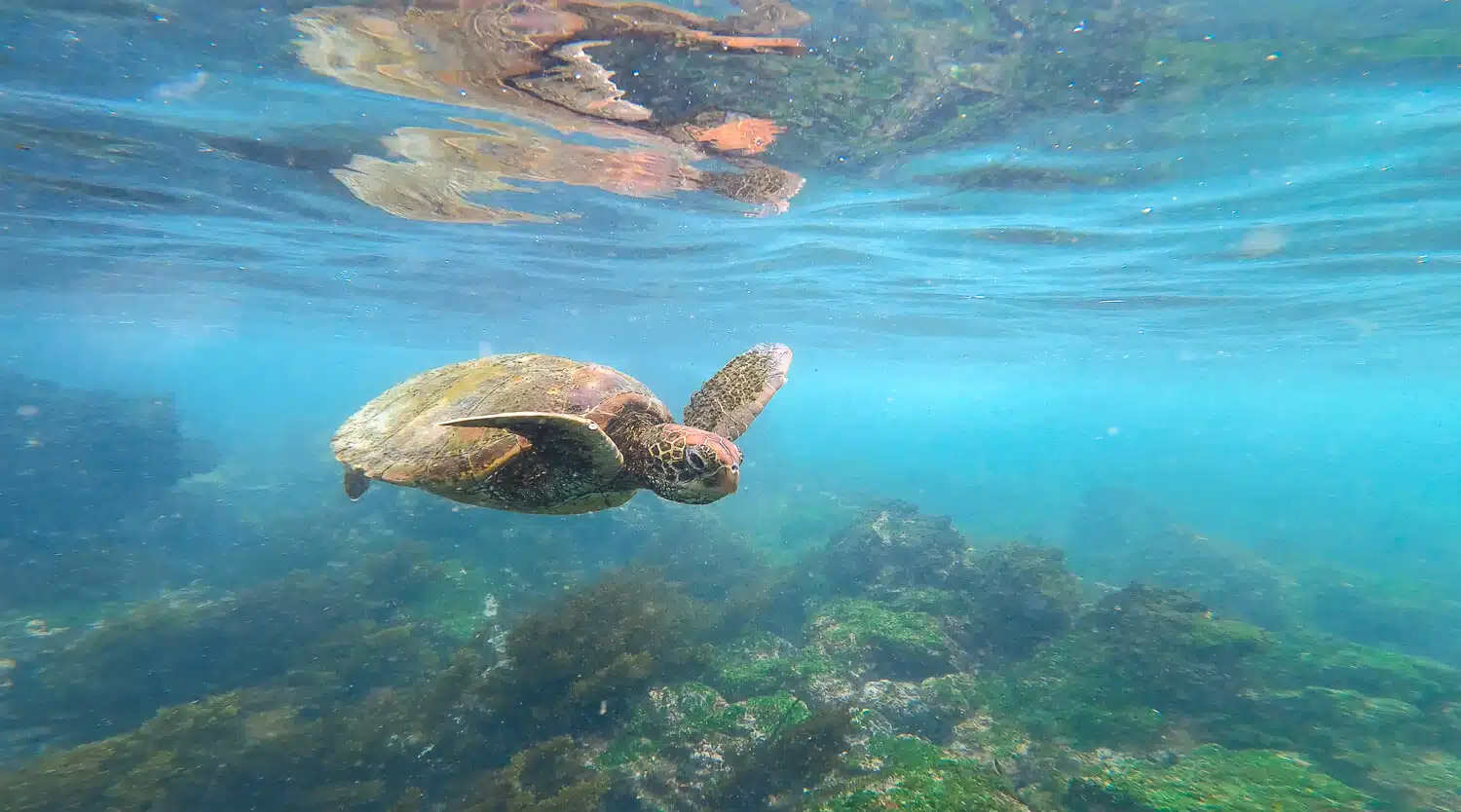
8. Plaza Islets
These are two of the many uninhabited islets in the Galapagos. They were formed by an uplift of the seabed giving it its flat but very unique shape. They are located on the northeastern side of Santa Cruz island. Apart from diving in the Plaza islets you can also do a land-based tour with snorkeling.
Here the dives are usually between 15 and 18 meters in depth, you can see an eel garden and bigger pelagic species like rays, sharks, and green turtles. The dive is fit for all kinds of level as there isn’t usually strong currents on site. If you’re lucky you will also able to dive with playful sea lions.
To book this tour: Check the local company Macarron Scuba Diver’s website
9. Santa Fé Island
And to conclude the list of dive sites in Santa Cruz here’s another one that takes you all the way to Santa Fé island, one of the biggest islands in the Galapagos, that it’s located just 20 km away from Santa Cruz.
Santa Fé has three different dive sites, the Tip, the Arc, and the Cliff. The visibility is usually over 10 meters and it can get to 20-25 meters. Here the waters are of gorgeous turquoise color and are usually very calm, for which it is a good recommendation to do your diving certification here.
To book this tour: Check the local company Macarron Scuba Diver’s website
Best Dive Sites in Santa Cruz
Where to Stay
Santa Cruz Island in the Galapagos has a variety of accommodation options to choose from, and we’ve narrowed down the top three choices for you.
For the ultimate luxury getaway, Finch Bay Galapagos Hotel offers a range of amenities, including an outdoor swimming pool, fitness center, and hot tub. Hotel Acacia is a comfortable and serene environment to unwind in the heart of Puerto Ayora, with lush gardens, a shared lounge, and a terrace. And Suites Hermosas offers two fully furnished apartments with breathtaking views and fully equipped kitchens.
To learn more about these options and other accommodation choices, check out the full article:
All The Articles About The Galapagos
San Cristobal Island – The easternmost island of the Galapagos, the “Isla Bonita”
Santa Cruz Island – The island with the best tourism infrastructure.
Isabela Island – The most adventurous and less explored island of the main three.
Plan your next adventure with us!
Here are the links we use and recommend to plan your trip easily and safely. You won’t pay more, and you’ll help keep the blog running!
Adventures in Sri Lanka - The Ancient Ceylon
Explore The Galapagos Islands
Hiking in Switzerland & Italy
The Hidden Worlds of Ecuador
ABOUT ME
I’m João Petersen, an explorer at heart, travel leader, and the creator of The Portuguese Traveler. Adventure tourism has always been my passion, and my goal is to turn my blog into a go-to resource for outdoor enthusiasts. Over the past few years, I’ve dedicated myself to exploring remote destinations, breathtaking landscapes, and fascinating cultures, sharing my experiences through a mix of storytelling and photography.
SUBSCRIBE
Don’t Miss Out! Be the first to know when I share new adventures—sign up for The Portuguese Traveler newsletter!
MEMBER OF
RECENT POSTS
COMMUNITY
GUIDES
Need help planning? Get our interactive Ecuador and Galapagos guides with curated itineraries. Learn more…
RELATED POSTS
TRAVEL INSURANCE
Lost luggage, missed flights, or medical emergencies – can you afford the risk? For peace of mind, I always trust Heymondo Travel Insurance.
Get 5% off your insurance with my link!



